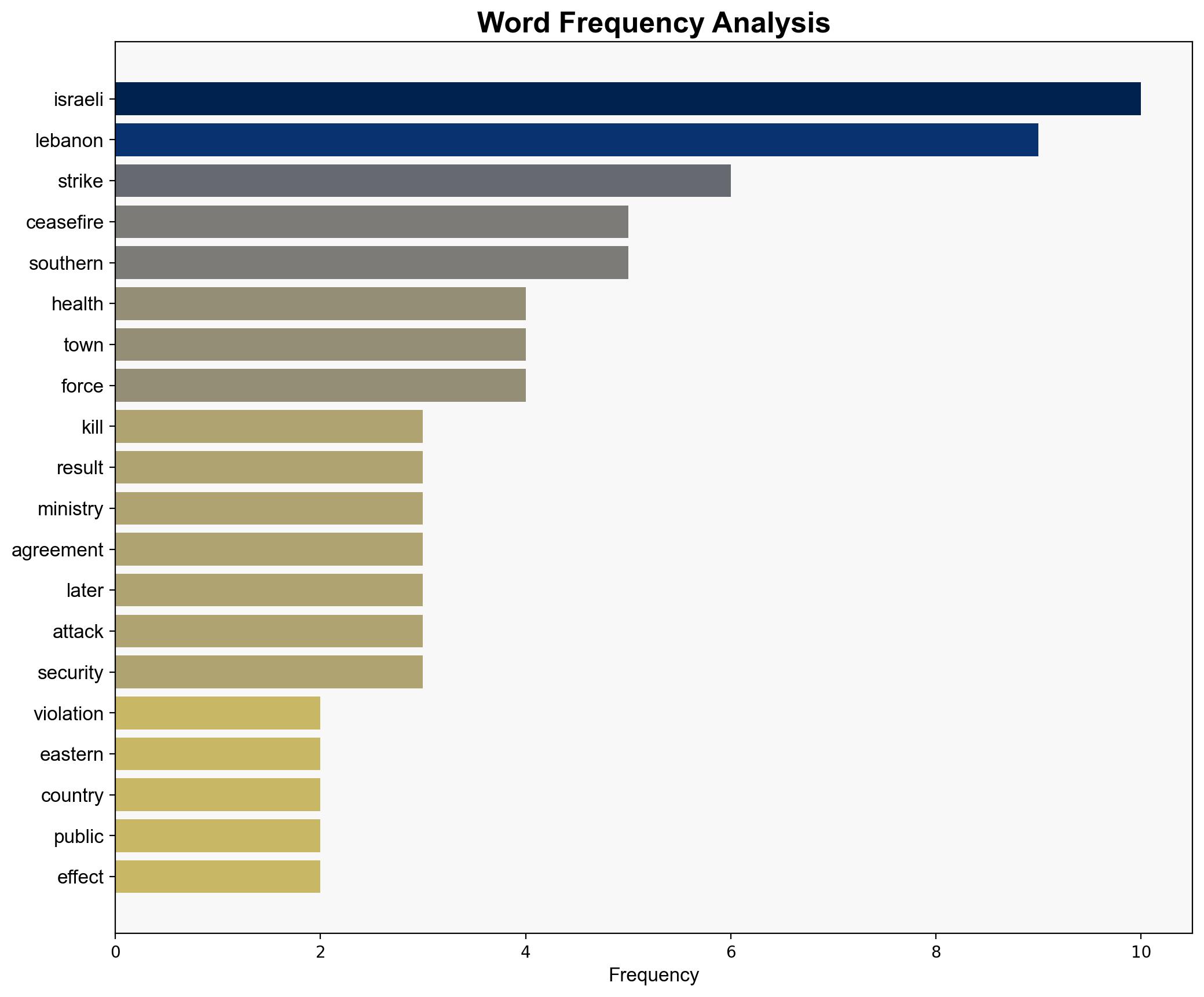At least 3 killed in new Israeli strikes across Lebanon amid ceasefire violations – Globalsecurity.org
Published on: 2025-10-28
Intelligence Report: At least 3 killed in new Israeli strikes across Lebanon amid ceasefire violations – Globalsecurity.org
1. BLUF (Bottom Line Up Front)
The most supported hypothesis is that the Israeli strikes are a strategic response to perceived threats from Hezbollah, aiming to deter further aggression and maintain regional security. This is supported by the pattern of targeted strikes and historical context of conflict. Confidence level: Moderate. Recommended action: Monitor for escalation indicators and engage in diplomatic channels to reinforce ceasefire agreements.
2. Competing Hypotheses
1. **Hypothesis A**: The Israeli strikes are a direct response to Hezbollah’s military activities, intended to neutralize immediate threats and deter future aggression. This hypothesis is supported by the targeted nature of the strikes and historical patterns of Israeli military strategy.
2. **Hypothesis B**: The strikes are part of a broader Israeli strategy to exert pressure on Lebanon and Hezbollah, potentially to influence political dynamics within Lebanon or to respond to external pressures, such as international diplomatic considerations or internal political pressures within Israel.
Using ACH 2.0, Hypothesis A is better supported due to the alignment with past Israeli military actions and the specific targeting of areas associated with Hezbollah activities.
3. Key Assumptions and Red Flags
– **Assumptions**: Both hypotheses assume that Israel’s primary motivation is security-driven. Hypothesis B assumes additional political motivations.
– **Red Flags**: Lack of detailed intelligence on Hezbollah’s recent activities that might have triggered the strikes. Potential bias in reporting from sources with vested interests.
– **Blind Spots**: Limited insight into internal Israeli decision-making processes and potential undisclosed diplomatic communications.
4. Implications and Strategic Risks
The continuation of Israeli strikes could lead to a significant escalation in the region, potentially drawing in other regional actors and destabilizing the broader Middle East. There is a risk of Hezbollah retaliating, which could lead to a cycle of violence. Economic impacts could arise from disrupted trade routes and increased military expenditures. Geopolitically, strained relations between Lebanon and Israel could affect international diplomatic efforts and peacekeeping missions.
5. Recommendations and Outlook
- Enhance intelligence collection on Hezbollah’s activities to better understand potential threats and motivations.
- Engage in diplomatic efforts to reinforce the ceasefire agreement and prevent further escalation.
- Scenario Projections:
- Best Case: Successful diplomatic interventions lead to a reinforced ceasefire and reduced tensions.
- Worst Case: Escalation into broader conflict involving multiple regional actors.
- Most Likely: Continued low-intensity conflict with periodic violations of the ceasefire.
6. Key Individuals and Entities
– Hezbollah leadership (unnamed in the source)
– Israeli military command (unnamed in the source)
– United Nations Interim Force in Lebanon (UNIFIL)
7. Thematic Tags
national security threats, regional conflict, ceasefire violations, Middle East stability




